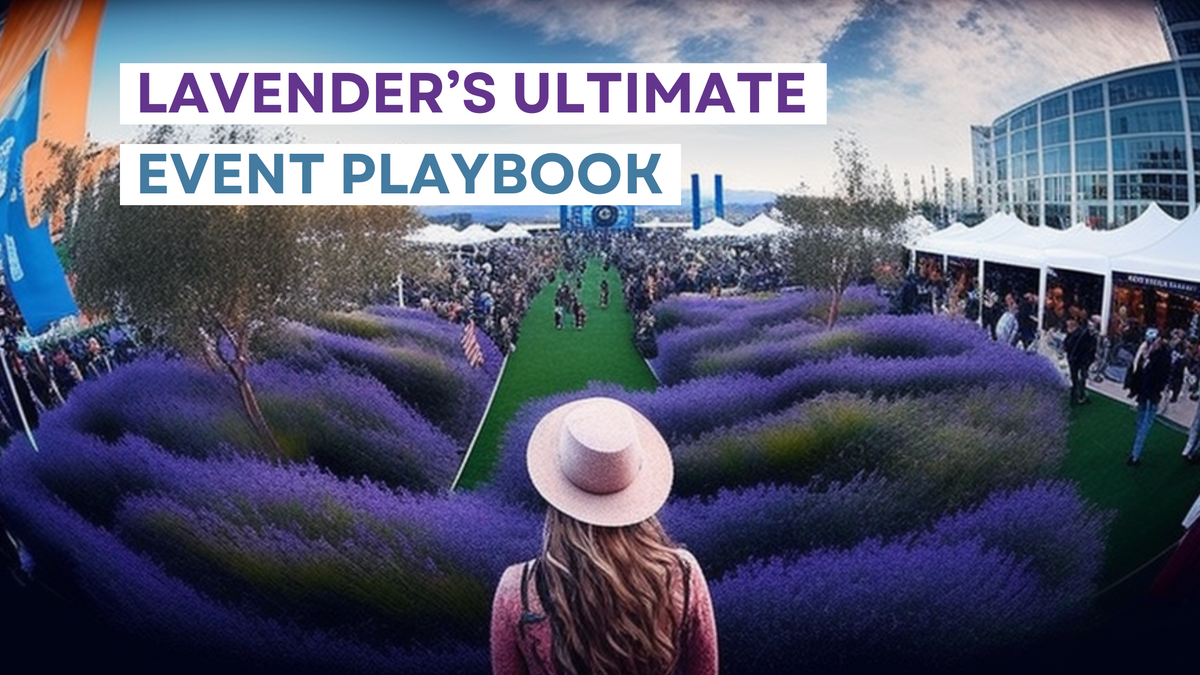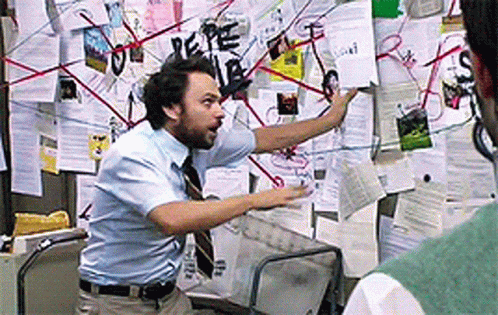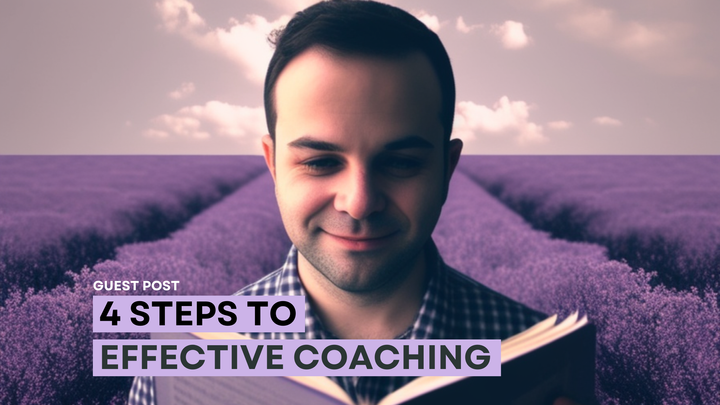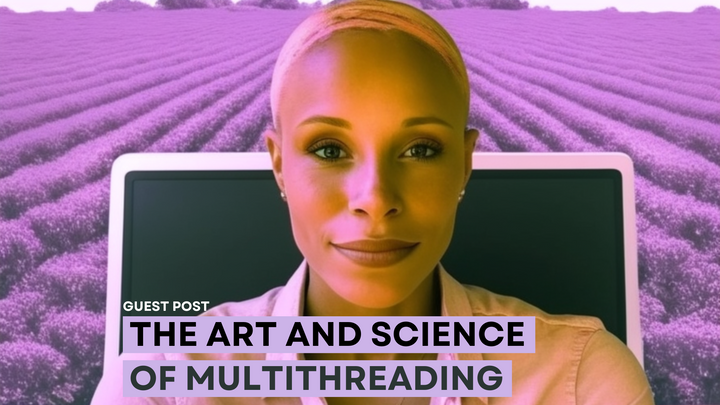Conquer Conferences: Lavender's Ultimate Event Playbook
Events are a lot of work with a hefty price tag. Preparation is key. Our playbook shows you how to set yourself up for success (and ROI).

Events tend to come with a potent mix of emotions.
You prepare to meet with prospects and customers — exciting.
You spend days meeting with prospects and customers — exhausting.
You now have a giant list of names, emails, and (hopefully) meetings booked — overwhelming.
Now, toss expenses into the mix. Booths, sponsorships, tickets, and travel expenses come with a lofty price tag — not to mention the value of your time.
With so much emotion, cost, and pressure for ROI, it’s critical to have a game plan.

Here’s our event playbook to help you make the most of your next conference.
Before the event
“Give me six hours to chop down a tree, and I will spend the first four sharpening the axe.” - Abraham Lincoln
Planning is key to generating quantifiable results out of events. This is true for sellers and marketers alike.
That means you need to:
- Create a target list of folks you need to meet (at the conference and nearby offices). Also, consider who is sponsoring and speaking. Don’t make this list in a silo. Talk to marketing, partnerships, community, and customer success teams to align on who you need to talk to and why.
- Conduct outreach to secure meetings before the conference. People’s time is precious, and their schedules will be full. You need to reach out in advance to respect their time and ensure they’re allotting time for you.
- Plan your schedule. Time can get away from you at these events. Create a schedule that includes non-conference work, healthy habits like exercise, and seeing key customers, prospects, speakers, and events. Don’t let the event own you. Own your time at the event.
- Lean into the excitement. Connecting in person and on a human level can be powerful. Lean into it and have fun.
Pre-Event Outreach
Most pre-event outreach is awkward or ineffective.

I recently received an email about the “chance” to meet someone’s CEO at a conference.
I’m sure they’re great, but I don’t know the sender, CEO, or their company. And it suspiciously seemed like their marketing team wrote it.
What’s more ineffective: No ploys, jump straight to the point in your email.
For example: "Hey, are you going to SaaStr?"
An even better (and preferred) approach is to strengthen your outbound with some research:
"Hey, saw your team is headed to SaaStr.
Would love to bend your ear while we're there. Your CEO mentioned the whole org was switching to HubSpot. I'd love to hear how the experience is going.
Open to it?"
Add personalization research, and people will reciprocate the effort.
The worst case scenario is they don't reply, and you can repeat the whole thing in person. 💜
For example, "Hey, I'm so and so. I sent you an email about your CEO’s comments about switching to HubSpot before the conference. How's the event going?"
Bonus tips on what not to do:
- Assume they owe you time. Instead, use unsure tones and respectfully ask if they’d be willing to share some time with you.
- Forget the details. If your company has a booth, happy hour, event, or a meeting place for prospect convos, don’t forget to include all the details. It’s easy to miss during outreach.
- Not offer anything in return. Why should they meet with you? What’s in it for them? What do you want to talk to them about and why? We’re not suggesting you answer all these questions in the first touch, but you should give them a reason to connect upfront.
- Don’t include a sales-related call to action. This tip may be controversial, but you’re still not pitching your product immediately or asking for a formal meeting. Pre-event outreach aims to start a conversation. Hopefully, you get the chance to continue that conversation in person and connect on a personal level.
During the Event
As a buyer at events, I know I can expect to:
- Be awkwardly ignored as I walk around booths.
- Be discreetly (or aggressively) badge-scanned so I can get loads of impersonal emails sent by marketing reps via sales reps’ inboxes after the event.
- Get in a conversation that turns into a pitch way too quickly.
There are better ways to go about selling and marketing at a conference.
Conferences are a perfect moment to connect with buyers. You just have to approach it correctly.
Here are a few good rules for during the conference:
1. Be “on”
Being at a conference is a time when you can’t retreat. If you need to recharge, don’t hesitate to step away and take five minutes to yourself in private if needed. Events can be exhausting. Be aware of when you need a break, a nap between the conference and the evening yacht party, or whatever rest looks like for you. Take the rest!
When you’re at the booth, it’s important to look people in the eyes and engage them first. Staying fueled and caring for yourself is key — both for a productive time and your well-being.
Booths are also a major expense. It's not a good look for your booth to be:
- Unattended (uh oh).
- Crowded with team members talking amongst themselves (that’s not inviting).
- Filled with multiple people sending emails in the back (go somewhere else).
Be proactive at the booth. It’s important to be welcoming and engaging to inspire passersby to stop and talk. Some of these folks want to talk to you, they just need an open door.
2. Take notes
Your follow-up after the event is everything. Set yourself up for success by taking notes (Notes app, Slack yourself, whatever works for you) about your conversations. These notes should include the person’s name, company, and at least a couple of details from your conversation with them.
Bonus points for remembering interesting or personal details. Once, someone from an event booth remembered a story I told them about my cat. They referenced this in their 1:1 follow-up email, which made me smile while feeling seen and like they listened to me. Don’t underestimate small human connections.
3. Relax
Nothing is more awkward than conversing with a sales rep with commission breath.
Talk about business. Talk about life. If the conversation naturally flows to where your product can help, great. If not, it’s okay. Don’t force it. You’re building a connection you can use at a later date to get a response to your cold email.
4. Time block
In addition to the time block when you’re at the event, it’s also advantageous when the event is over.
Block off time to send LinkedIn connection requests to folks alongside your notes from the conversation to help them remember you. Other time block ideas include 1:1 follow-up, marketing coordination, and tools like Snappy or Sendoso to send thoughtful gifts to high-intent buyers you met in person.
5. Explore outside the conference
This advice aligns with pre-conference prep, but don’t be afraid to research prospects and customers who aren’t at the conference but are in the area.
Conferences usually mean travel, which means you can get in front of folks you usually wouldn’t see. They’ll value that you chose them over a conference.
Just make sure you’re not leaving your teammates high and dry. Communicate these schedules ahead of time.
Post-Event Follow-up
A common occurrence after a conference, tradeshow or event is to give a long list emails to marketing and cross your fingers. However, not every email should go to marketing.
Marketing should not be able to send emails on behalf of a sales rep.
Most people you meet at a conference (as a seller) belong in a marketing email drip. (Not a sales drip.)
Relationships are to be fostered. The beauty of events is that you can connect on a powerful, human level in person. This is why some folks belong in a marketing email drip, and some folks deserve a thoughtful and personal follow-up.
And if a recipient isn’t actively engaged with you, wait for them to engage with marketing.
If they’re opening and clicking on what marketing is sending, figure out why they are and then send them an email based on your hypothesis.
Case in point: Check out this sales-email-written-by-marketing rewrite on LavenderLand's "Pardon The Outbound."
Pro tip: Create strong alignment and collaboration with marketing to be successful here.
Sales has a role to play, of course. Sellers should deploy light, friendly touches up front.
For high-priority accounts, you must do deeper research for the second and third follow-ups.
You can also use the marketing signals to drive who gets further engagement.
We love this tip from Leslie Douglas, Head of Sales Programming & Thought Leadership @ Sell Better. Her advice is to create a tiered approach. Tier one folks go into a more blank, personalized sequence. And then tier two is for people who showed more genuine interest.
Here are some email examples where marketing and sales can work together.
Email 1:
"Hey, so great catching up on {specific thing from notes}.
I couldn't help but notice {non-conference-related research that tells you they have a problem you can solve}. Usually, that means you're dealing with {problem}.
If that's a priority, I would love to share what we're doing in that space.
Safe travels."
Email 2:
"Hey, no worries if {problem} isn't a priority, but just wanted to bump this email thread in case it got buried post-conference."
Meanwhile, marketing sends emails about the product, shares helpful resources, etc. Their goal is to keep the company top of mind and share valuable information.
As recipients engage, that lets you know if you should keep following up.
You can:
- Make calls.
- Send other helpful resources (third-party content is effective).
- Ping others within their organization.
- Send a typical personalized cold email, but reference meeting the other contact at the event in a PS. e.g. “PS. I got to meet Jim down at #saastr2023. So much fun talking about the bad emails he gets.”
- Engage with them on LinkedIn.
Use marketing activities for intent signals. Attending a conference isn't an intent signal for buying your software or services.

Navigating events can be an expensive emotional rollercoaster.
To make the most of it and prove ROI, thoughtfully plan, be present, and take notes.
Remember the importance of collaboration between sales and marketing, building valuable connections in person, and sending personalized, relevant emails afterward.
In an ever-evolving and challenging market, making meaningful human connections is key.
If you’re not using it already, try Lavender for free to maximize those connections in your email follow-up. 💜
Want more conference content? Watch and learn as Will Aitken reviews all of the emails he received after SaaStr Europa 2023.




